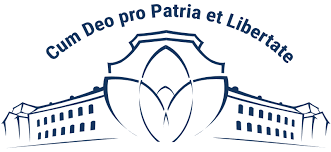CLIMATE CHANGE TRENDS AND PEAT FIRES IN POLTAVA REGION: VISUAL COMPARISON USING GOOGLE EARTH ENGINE
DOI:
https://doi.org/10.32782/2786-5843/2025-3-6Keywords:
climate change, non-forest peat fires, Google Earth Engine, remote sensing, Poltava region, satellite monitoring, land surface temperature, precipitation, soil moistureAbstract
The relevance of the study. Global warming poses a significant threat to ecosystems, particularly peatlands, which are highly sensitive to hydrological changes and serve as major carbon reservoirs. Under rising temperatures, prolonged droughts, and declining groundwater levels, peatlands degrade and dry out, becoming more prone to spontaneous ignition. These fires release large amounts of stored carbon, intensifying the greenhouse effect and accelerating climate change. Since the 1960s, the global peat biome has shifted from being a carbon sink to a source of greenhouse gases. In Ukraine, landscape fire risks are projected to double, with notable regional disparities. Poltava region, where peatlands are adjacent to agricultural areas and settlements, is a priority for detailed study. The subject of this research is the relationship between climate change and peat fires in Poltava region. The purpose of the research is to analyze this relationship using satellite data via Google Earth Engine (GEE).Research methodology: involves a spatio-temporal analysis of key climate indicators (LST, precipitation, and soil moisture) from 2001 to 2023 using MOD11A1, CHIRPS, and GLDAS datasets. Fire statistics for non-forested peatlands from 2004–2023 were compared to satellite data to identify correlations, lag effects, and anomalies. GEE was selected for its computational capacity and access to large geospatial datasets. The results revealed a persistent increase in LST and a decline in surface soil moisture (especially 0–10 cm), which mostly correlated inversely with fire frequency. The anomalous year 2010 (high annual moisture and many fires) is explained by masked seasonal droughts and wind effects. Human factors were also emphasized. Practical significance lies in improving fire risk forecasting, monitoring strategies, and resilience planning. Conclusions: Poltava’s climate is becoming hotter and drier, increasing peat fire risks. These are driven by a complex interplay of climatic and anthropogenic factors.A comprehensive approach, including improved monitoring, impact mitigation, and peatland restoration, is required for effective fire risk reduction and regional adaptation. Prospects for further research: Further work should focus on developing predictive models incorporating seasonal variability, human activity, and soil moisture dynamics to improve the accuracy of peat fire risk assessments and regional adaptation strategies.
References
Price J. S., Sutton O. F., McCarter C.P.R., Quinton W. L., Waddington J. M., Whittington P. N., Strack M., Petrone R. M. Advances in wetland hydrology: the Canadian contribution over 75 years. Canadian Water Resources Journal / Revue canadienne des ressources hydriques. 2023. Vol. 48. P. 379–427. DOI: https://doi.org/10.1080/07011784.2023.2269137.
Guzy A., Piasecki A., Witkowski W. T. Climate change and shallow aquifers – Unravelling local hydrogeological impacts and groundwater decline-induced subsidence. Remote Sensing of Environment. 2025. Vol. 321. P. 114682. DOI: https://doi.org/10.1016/j.rse.2024.114682.
Jones M., Abatzoglou J., Veraverbeke S., Andela N., Lasslop G., Forkel M., Smith A., Burton C., Betts R., Werf G., Sitch S., Canadell J., Santín C., Kolden C., Doerr S., Le Quéré C. Global and regional trends and drivers of fire under climate change. Reviews of Geophysics. 2022. Vol. 60. P. e2020RG000726. DOI: https://doi.org/10.1029/2020RG000726.
Turetsky M. R., Kane E. S., Harden J. W., et al. Global vulnerability of peatlands to fire and carbon loss. Nature Geoscience. 2015. Vol. 8, № 1. P. 11–14. DOI: https://doi.org/10.1126/science.1132075?utm_source=chatgpt.com.
Randerson J. T., et al. The impact of boreal forest fire on climate warming. Science. 2006. Vol. 314, № 5802. P. 1130–1132. DOI: https://doi.org/10.1126/science.1132075.
Ward D. S. [et. al.] The changing radiative forcing of fires: global model estimates for past, present and future. Atmos. Chem. Phys. 2012. Vol. 12. № 23. P. 10857–10886. DOI: https://doi.org/10.5194/acp-12-10857-2012.
Leifeld J., Wüst-Galley C., Page S. Intact and managed peatland soils as a source and sink of GHGs from 1850 to 2100. Nature Climate Change. 2019. Vol. 9. P. 945–947. DOI: https://doi.org/10.1038/s41558-019-0615-5.
Nelson K., Thompson D., Hopkinson C., Petrone R., Chasmer L. Peatland-fire interactions: A review of wildland fire feedbacks and interactions in Canadian boreal peatlands. Science of The Total Environment. 2021. Vol. 769. P. 145212. DOI: https://doi.org/10.1016/j.scitotenv.2020.145212.
Зміна клімату: наслідки та заходи адаптації: аналіт. доповідь / С.П. Іванюта та ін. ; за ред. С.П. Іванюти. Київ : НІСД, 2020. 110 с.
Малицька Л.В., Балабух В.О. Ймовірні зміни кліматичних умов України до середини ХХІ ст. Гідрологія, гідрохімія і гідроекологія. 2020. № 1(56). С. 94–100. DOI: https://doi.org/10.17721/2306-5680.2020.1.10.
Мельник І.Г. Використання супутникових даних для моніторингу та аналізу торф’яних пожеж на прикладі Полтавської області (серпень – листопад 2024 року). Слобожанський науковий вісник. Серія: Природничі науки. 2025. № 1. С. 125–133. https://doi.org/10.32782/naturalspu/2025.1.18.
IPCC. Climate Change 2021: The Physical Science Basis. Contribution of Working Group I to the Sixth Assessment Report / IPCC. Женева: Intergovernmental Panel on Climate Change, 2021. URL: https://www.ipcc.ch/report/ar6/wg1/ (дата звернення: 25.07.2025).
Flannigan M. D., Stocks B. J., Wotton B. M. Climate change and forest fires. Science of the Total Environment. 2000. Vol. 262, № 3. P. 221–229. DOI: https://doi.org/10.1016/S0048-9697(00)00524-6.
Schultz S., Millard K., Darling S., Chénier R. Investigating the use of Sentinel-1 for improved mapping of small peatland water bodies: towards wildfire susceptibility monitoring in Canada’s boreal forest. Hydrology. 2023. Vol. 10, № 5. P. 102. DOI: https://doi.org/10.3390/hydrology10050102.
Rein G., Huang X. Smouldering wildfires in peatlands, forests and the Arctic: Challenges and perspectives. Current Opinion in Environmental Science & Health. 2021. Vol. 24. P. 100296. DOI: https://doi.org/10.1016/j.coesh.2021.100296.
Сніжко С., Шевченко О., Свінціцька Г. Хвилі тепла в центральних областях України за умов сучасних змін клімату. Вісник Київського національного університету імені Тараса Шевченка. Військово-спеціальні науки. 2019. № 2 (39). С. 58–62. DOI: https://doi.org/10.17721/1728-2217.2018.39.58-62.
Наказненко А.Г., Савченко О.Г. Зміни термічного режиму Полтавської області в умовах зміни клімату. Конструктивна географія та раціональне використання природних ресурсів. 2021. Вип. 1(1). С. 59–64. DOI: https://doi.org/10.17721/1728-2217.2018.39.58-62.
Писаренко Л.А., Краковська С.В. Основні напрямки сучасних досліджень взаємодії клімату і підстильної поверхні. Український гідрометеорологічний журнал. 2020. Вип. 25. С. 38–52. DOI: http://dx.doi.org/10.31481/uhmj.25.2020.04.
Kumar L., Mutanga O. Google Earth Engine applications since inception: Usage, trends, and potential. Remote Sensing. 2018. Vol. 10. № 10. P. 1509. DOI: https://doi.org/10.3390/rs10101509.
Funk C., Peterson P., Landsfeld M., et al. The climate hazards infrared precipitation with stations – a new environmental record for monitoring extremes. Scientific Data. 2015. Vol. 2. P. 150066. DOI: https://doi.org/10.1038/sdata.2015.66.
Balas D., Duda M., Tiwari M. K., Trivedi M., Patel G. Impact of Land Surface Temperature (LST) and Ground Air Temperature (Tair) on Land Use and Land Cover (LULC): An Investigative Study. International Journal of Environment and Climate Change. 2023. Vol. 13. P. 3117–3130. DOI: https://doi.org/10.9734/ijecc/2023/v13i102980.
Pham-Duc B., Nguyen H., Phan H., Tran-Anh Q. Trends and applications of Google Earth Engine in remote sensing and earth science research: a bibliometric analysis using Scopus database. Earth Science Informatics. 2023. Vol. 16. P. 2355–2371. DOI: https://doi.org/10.1007/s12145-023-01035-2.
Hu Y., Christensen E. G., Amin H. M. F., Smith T. E. L., Rein G. Experimental study of moisture content effects on the transient gas and particle emissions from peat fires. Combustion and Flame. 2019. Vol. 209. P. 408–417. DOI: https://doi.org/10.1016/j.combustflame.2019.07.046.
Полтавський обласний центр з гідрометеорології. Найсухіше літо за останні 100 років: пожежна небезпека перевищує 35 000. Facebook. 2024. 29 серпня. URL: https://www.facebook.com/photo/?fbid=877725267299782 (дата звернення: 28.07.2025).
Оцінка вразливості до зміни клімату: Україна / ред. М. Ставнюк. Київ : Національний екологічний центр України, 2012. 60 с. URL: https://necu.org.ua/wp-content/uploads/ukraine_cc_vulnerability.pdf (дата звернення: 25.07.2025).
Leal Filho, W., Fedoruk, M., Pires Eustachio, J. H. P., Splodytel, A., Smaliychuk, A., & Szynkowska-Jóźwik, M. I. The environment as the first victim: The impacts of the war on the preservation areas in Ukraine. Journal of Environmental Management. 2024. Vol. 364. P. 121399. DOI: https://doi.org/10.1016/j.jenvman.2024.121399.







